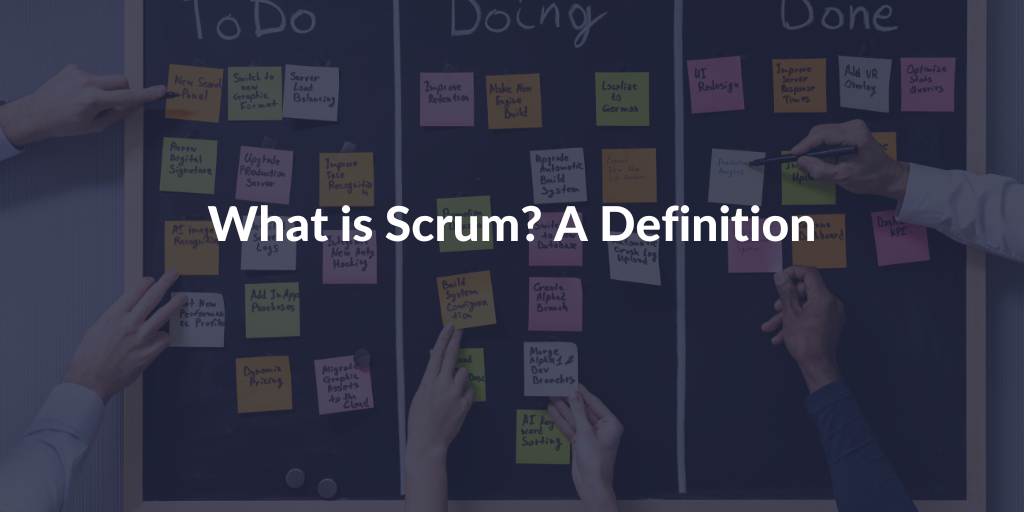Categories
Tags
Newsletter
Subscribe to the QRP International neswletter and get all the news on trends, useful contents and invitations to our upcoming events
Subscribe
Scrum is a framework for responding to complex and changing problems while productively and creatively delivering products with the highest value possible.
Scrum is a framework for responding to complex and changing problems while productively and creatively delivering products with the highest value possible.
Scrum allows you to work as a team to make continuous improvement on iterative incremental product deliveries to satisfy your customers. Scrum is based on the theory of empirical process control and supported by 3 fundamental pillars:
Scrum is:
Project Management may seem complex but it is very concrete. There is always an initiation phase, a planning phase (to have visibility), an execution phase, a control phase and a closing phase. Whether you are in an agile environment or not, you will always find these phases, even with Scrum.
Unlike the V-cycle, Scrum focuses on the product. The V-cycle is a Project Management method in two phases, one for each branch of the V. There is a descending phase, from the need expressed by the customer until the product is produced, and an ascending phase, from the finished product to the verification of its quality. Scrum addresses the challenges of the V-cycle: lack of visibility, endless deliveries, taking into account changing customer needs and focusing on added value by organising work in an iterative and incremental way.
When a customer expresses a need, it is necessary to set up an organisation that is capable of adapting itself to meet the customer’s real and final need. To achieve this, the Scrum “method” works in iterative and incremental mode to propose products at each stage to meet the customer’s real need. In this way, Scrum avoids the lack of visibility, endless delivery and the waste that some companies experience with V-cycle Project Management.
The Scrum metaphor (from the sport rugby) first appeared in 1986 in a publication by Hirotaka Takeuchi and Ikujiro Nonaka entitled “The New Product Development Game”, which was then applied to the industrial world. They described a new holistic approach that would increase the speed and flexibility of new product development.
In 1995, Ken Schwaber and Jeff Sutherland presented a short paper describing the foundations of what would become the Scrum method at the OOPSLA (Object-oriented Programming, Systems, Languages, and Applications) research conference in Austin, USA. In 2001, they participated in the development of the Agile Manifesto and in 2011, they formalised the Scrum framework for the development, delivery and maintenance of complex products in the Scrum Guide.
Download the full Scrum guide here.
When the 5 values are embodied and lived by the Scrum team, the pillars emerge and consolidate the trust between everyone. The successful application of Scrum therefore depends on people being able to embrace these values:
Scrum consists of Scrum teams, events, artifacts and rules. Each component of this framework has a specific purpose and is essential to the success and use of the framework.
Scrum teams are self-organised and multi-disciplinary. They choose the best way to do their work, rather than being directed by people outside the team, which promotes flexibility, creativity and productivity. Read more about the Scrum roles and responsibilities.
These 5 events promote transparency and inspection. They are used to create regularity and minimise the need for meetings not defined by Scrum. All events are time-bound through time-boxes so that each event has a maximum duration.
Scrum artefacts represent either work or value, providing transparency and opportunities for inspection and adaptation. Scrum rules are the terms that link roles, events and artefacts together. These rules are described in the Scrum Guide.
QRP International is a training organisation that offers the Scrum certification: the Scrum Master or Scrum Product Owner. Find out more about the Scrum Master Exam.
QRP International also offers other Agile methodologies, apart from Scrum, we write about them in our blog. For example read our AgilePM vs Scrum blogpost to find out more!
See everything explained in our quick Scrum YouTube Video!
Would you like to have more information? Don’t hesitate to write to us!